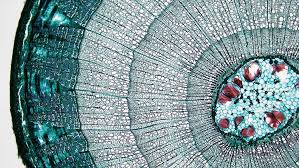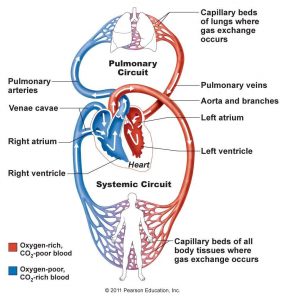
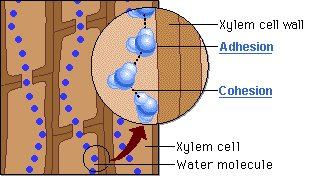
Fall 2022 – Lab 10 has been canceled to allow for an EDP Work Week. Lab 10 Pre-Lab, In-Lab and Post-Lab work and assignments have been canceled too.
Scroll below for In-Person Labs
Review the following material:
Transport in Plants
- In preparation for the Post-Lab, read the Background material on pp. 168-170 and review the material below.
- Make the appropriate drawings in your lab manual as instructed below (NOTE: you will not need to turn in a Pre-Lab assignment for this lab unit, but completing the Pre-Lab will ensure your success during the Post-Lab Assignment.
Leaf Anatomy (though stomata are not generally found on the upper epidermis as seen here, this diagram nicely shows important cell layers and gas exchange)
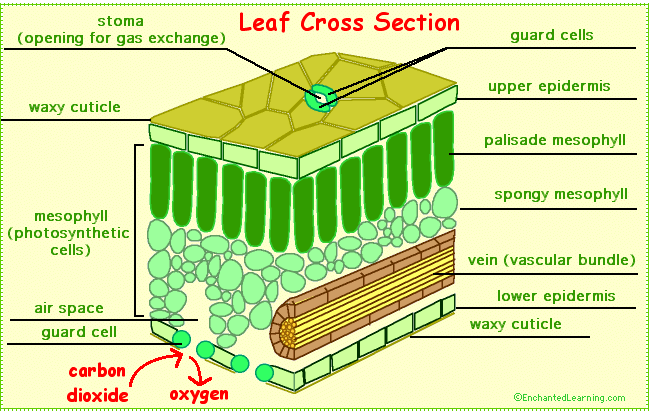
- Stomata opening and closing – videoclip (1:07)
- Water Transport in Plants – short video David Attenborough (3:05) -video continues to 4:44, but not as applicable to our experiment.
- Transportation in Plants (3:47) More detailed and provides information on both Transpiration and Translocation. This may be helpful for understanding the lab background if not yet covered in lecture.
- Sugar Transport: Pressure-Flow Hypothesis – nice explanation of sugar movement and “source to sink.
We will look more closely at structures involved in both Transpiration and Translocation in plant leaves and stem cross sections.
Text and Figures in the Lab Manual pages 95-96 and 169 will be very helpful for interpreting and labeling your drawings of the following slides.
Use the empty space on page 180 to draw and label the pictures #1, #2, #3, and #4 below
Draw and label the following prepared slides of plant tissues.
- View of the lower epidermis of Zebrina (#1). It is from a whole mount or epidermal peel preparation. Below is the procedure used to make the slides:
- Leaf Cross section slide (#2) – Fig. 6-2, p. 95 and Fig. 10-2 p. 169 – Structures to draw and label: cuticle, upper and lower epidermis, guard cells (stoma), mesophyll (contains spongy mesophyll and palisade layers), vein or midvein containing xylem and phloem.
- Herbaceous (#3) and Woody Stem slide (#4) – Fig. 6-4, p. 96 and Fig. 10-1, p. 169 – Epidermis, cortex, pith, vascular bundles in herbaceous stems (xylem/inside and phloem/towards outside of bundles), in woody stem xylem collects as inner stem annual rings (eventually growth rings/wood), phloem to the outside under the cork (in woody stems), epidermis layer.
- Tilia (# 4) woody stem sections showing 1, 2, 3 & 4 growth rings – Same woody stem as the slide in #3 above) – Fig. 6-4A, p. 96 – should be able to see most of the same structures as the woody stem above, but more developed in the older stem sections –pith is smaller on the inside, more developed annual rings/xylem accumulation with age that becomes wood, phloem to the outside of the xylem rings being crushed under the cork/epidermis layers, cortex less and less apparent under outmost layers.
Lab 10 Week I Information (p. 173-182)
Transport in Animals
Open and Closed Circulatory Systems
Activity 3 (p. 177-179) Crayfish – open circulatory system
- Open circulatory system – The open circulatory system is common to invertebrates. In an open circulatory system, the blood is pumped into a hemocoel and diffuses back to the circulatory system between cells. Blood is pumped into body cavities by a heart. See hemolymph circulation in Insects (0:48), discussion of circulation in a cockroach (1:45).
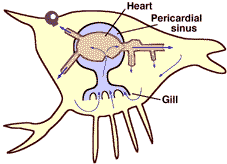 | 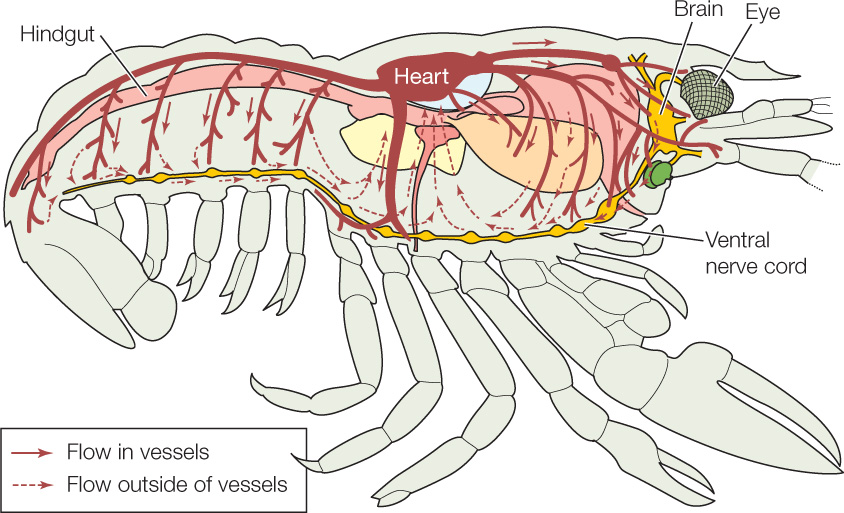 * * |
*Blood Flow in the Open Circulatory System of a Crayfish or Lobster Crayfish and lobsters have many arteries, which extend forward and backward from the heart. The heart pumps blood into these arteries, which transport the blood to most parts of the body. The arteries end, however, and then the blood is released from vessels into sinuses and lacunae that are lined with ordinary systemic tissue cells rather than with vascular endothelium. After release from the arteries, blood from the anterior parts of the body flows posteriorly, and blood from the posterior parts of the body flows anteriorly. These flows converge on a ventral sinus (cavity) that runs along the bases of the principal legs. From there the blood returns to the heart. Although not shown here, the blood passes through the gills (which are attached at the bases of the principal legs) in this final step.
*https://www.macmillanhighered.com/BrainHoney/Resource/6716/digital_first_content/trunk/test/hillis2e/asset/img_ch32/c32_fig04.htm
Crayfish Dissection Images
- External Anatomy: Anterior
- External Anatomy: Posterior
- External Anatomy: Mouthparts
- Internal Anatomy: Lateral
- Internal Anatomy: Dorsal Anterior
- Female Crayfish: Ventral
- Male Crayfish: Ventral
Videos of Preserved Crayfish Dissections
- Crayfish Dissection – Includes both the external and internal anatomy. Read your lab manual (pages 177-179) and watch this video to help you answer questions related to the crayfish. (7:14)
- Crayfish Dissections – External Anatomy (8:52) and Internal Anatomy (5:55)
Activity 2 (p. 175-176) Earthworm – closed circulatory system
- Closed circulatory system – Vertebrates, and some invertebrates, have a closed circulatory system. In a closed circulatory system, the blood is in closed in a vessel at all times. The blood is pumped by a heart and travels through each of the closed vessels. The blood is not typically pumped into any body cavities.
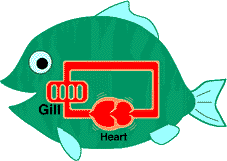
Earthworm
Note the closed circulatory system
 |  |
Videos of Preserved Earthworm dissections
- Preserved Earthworm Dissection Video – external and internal anatomy. Read your lab manual (pages 175-176) and watch this video to help you answer questions related to the earthworm anatomy. (7:27)
- Earthworm Dissection video (8:49)
Lab 10 Week II Information (p. 183-196)
Mammalian Circulation

We will focus this part of lab on:
- the 4 chambers of the heart
- right vs. left
- where did blood come from when entering the heart? -> the right atria?, -> the left atria?
- where does it go when it leaves the heart? -> the right ventricle?, -> the left ventricle?
- where is the blood oxygenated and deoxygenated
- pulmonary vs. systemic circulation
- interpreting EKGs (what occurs at the PQRST peaks).
- how does activity affect heart rate (BPM) and why?
Activity One (p. 183-185): Heart Structure and Double Circulation (Pulmonary and Systemic)
- The Lung and the Pulmonary Circuit (3:07)
- Human Circulatory System (images from Human Anatomy, 2nd Ed. McKinley and O’Loughlin)
- Circulation Rap/Song – (2:00) a catchy tune that gets to the heart of the matter.
- Heart – Systole and Diastole – lifelike beating heart animation
Mammalian Heart – Anatomy and Function – helpful links
- Sheep heart dissection– similar to what you would have seen in lab
- Living with an Artificial Heart: Prince’s Journey (5:45)
- Could artificial hearts make donations obsolete? (4:16)
Video – External Anatomy of the Heart and Blood Flow (using a heart model) (1:52)
Video – Internal Anatomy of the Heart and Blood Flow (using a heart model) (2:18)
Interactive – Label a heart. COMPLETE THIS as a group and download screen shot of your correct answers into your Group In-Lab assignment sheet.
Activity Two (p. 185-189): Heart Function and ECGs
Electrocardiogram – nice background information on electrical activity in the heart (1:20)
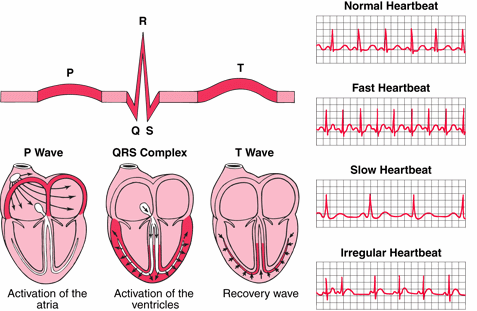
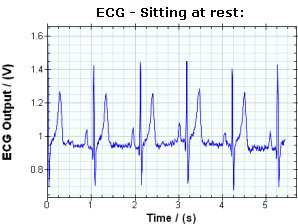
ECG peaks and heartbeats
ECG – Example of a student ECG from our lab (recording over 10 seconds)
EKG Online Course Introduction – Check out the lessons found in the Table of Contents and the EKG Basics Quiz at the bottom of the page. This is not to be used for self diagnosis or diagnosing others.
Instructions: Use the material in the Lab Manual and the Pre-Lab to complete the Post-Lab Assignment
Activity One: Transport in Higher Plants
In place of carrying out the Transpiration Experiment in your lab manual, we will use the NCSU created PRATT Interactive and Exploratory Plant Model to study transport and energetic processes in different areas of a plant. These processes are not static and can change over the course of 24 hours. To fully explain why we see these changes, it is important that students have reviewed all the Pre-Lab materials above.
- Open the link to the PRATT Interactive (see link above).
- Explore the different Processes listed to the left on the main page. In addition to looking at transpiration and translocation, we will also consider how the energetic processes of photosynthesis and aerobic respiration play a role in Plant Transport.
- Click on the 3 different parts of the plant highlighted by circles or from the center top of the menu. Within each of these plant parts, there are smaller circles to click on and learn more about the processes in these specific areas.
- Then click on all the buttons to the right indicating the different times of a 24 hour cycle.
- Once you have become more familiar with the PRATT Interactive, complete the attached Post-Lab Assignment.
- Turn in your completed Post-Lab work on Moodle. (Individual assignment)
Cool Articles/links About Researchers Using Plants for Phytoremediation
- Researchers in Elizabeth City NC – ‘Green Clean:’ Researchers Determining Natural Ways to Clean Contaminated Soil
- The Effects of Urban Trees on Air Quality (short article)
- NCSU Master of Environmental Assessment Degree Program
- NCSU Horticulture animation overview of photosynthesis, cellular respiration along with Transpiration and Translocation in different regions of plants and during different times of the day.
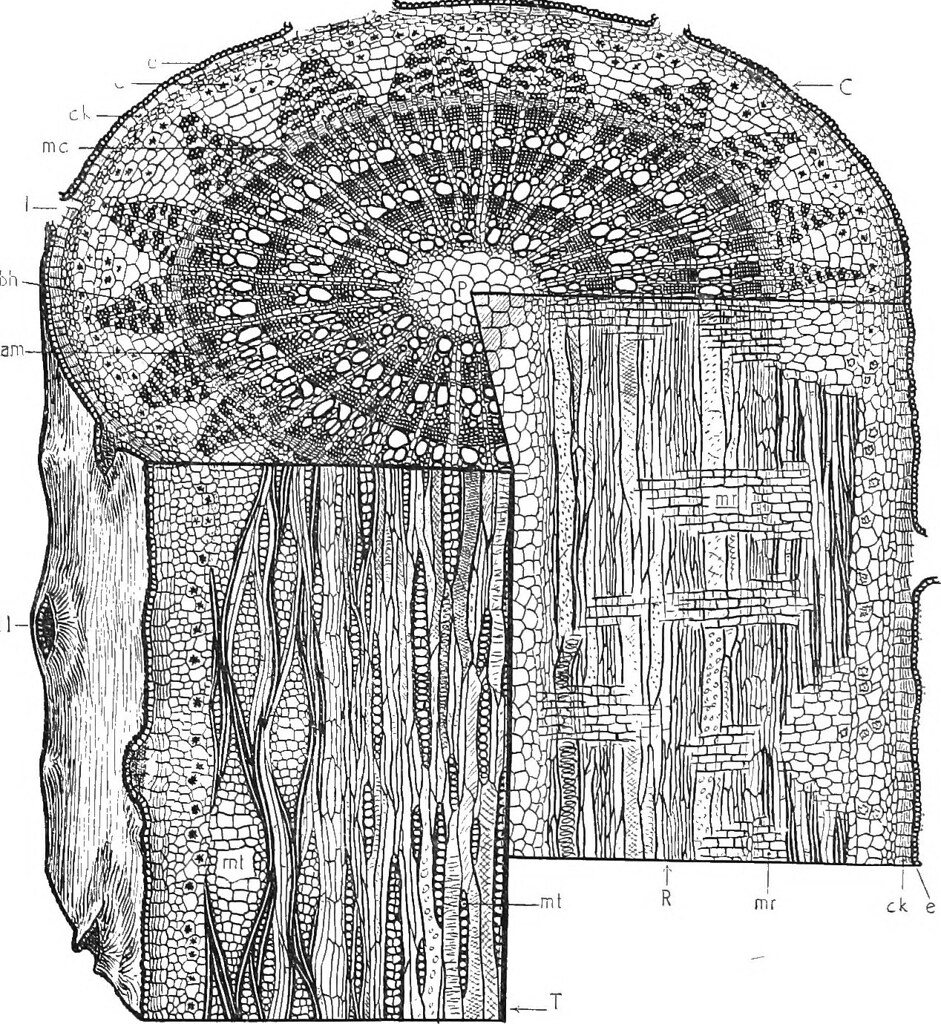
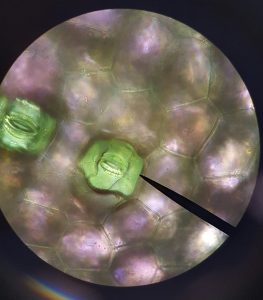
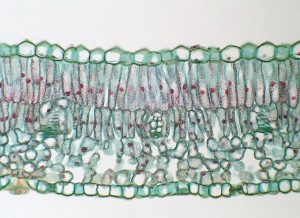
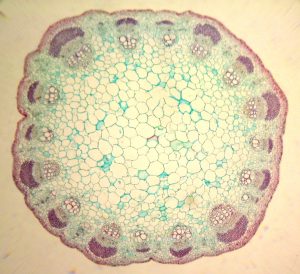 #4
#4 